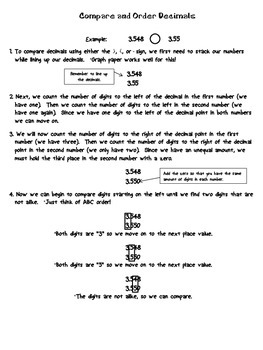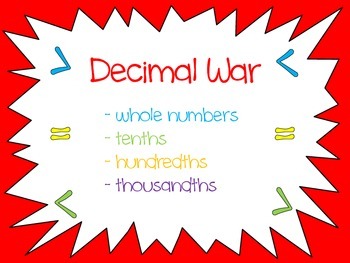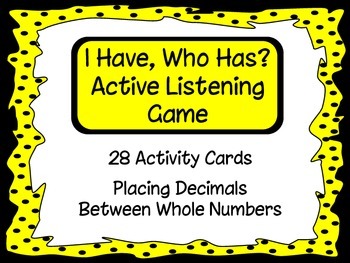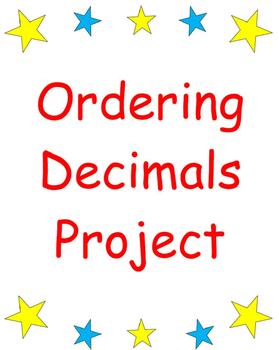Teaching
students to compare and order decimals can be a very challenging task, but over
the past few years I have found a few activities that help to reinforce the
initial instruction of these skills. I
often begin my instruction by introducing my students to our new friend “Al E
Gator” which is just an alligator head cut out of paper. I always tell the student to imagine that
the numbers they are comparing are pieces of alligator food and point out that
Al E Gator doesn’t have a stomach, so when he eats, he never gets full. Because he is never full, his mouth will
always open to the bigger number. I then
teach them my basic rules for how to work out a comparing decimals
question. These rules are:
1.
Stack your numbers while lining up the decimals
2.
Count the number of place value positions to the
left and right of the decimal point
3.
Add zeros to each side of the decimal point (if
needed) so that there are the same amount of digits to the right and left of
the decimal point

Once my
students understand these basic rules, I provide two groups of students with
large numbers and a decimal point. I
then tell them the number I want them to create and I have them arrange
themselves to form the numbers. Once
both groups form their numbers, I have them “Stack” themselves to work out the
problem. To do this, I have one group of
students stand and hold their cards under their chins. Then I have the other group kneel in front of
the first group while holding their cards under their chins. Once the students “Stack” themselves
correctly, I provide other students in the classroom with “zero” cards and have
them go to the front of the room and place these cards where they need to be so
that there are the same number of digits before and after the decimal. The kids enjoy moving around the room and love
this activity!

This
activity will provide the students in your classroom the opportunity to work
with a partner to review the concept of comparing decimals. The game is played with a stack of “Decimal”
cards, which are divided equally among the two students. Each student flips one of their cards over
and both students write the numbers on their work-mat. The students follow the basic rules I have
set forth for them to compare the numbers and then write the appropriate sign
between the two numbers on their work-mat.
Whoever has the largest number collects the cards and play is
repeated. The student with the most
cards at the end of the game wins.
Another way I reinforce the concept of decimals is with a whole class active listening game. The interaction in this activity provides a motivating and entertaining way for students to reinforce their knowledge of decimals as part of a whole number. The game starts when a student reads the first card. The student who has the card with the answer reads his or her card. The game continues in this manner until the last card is read. Students love this game. The first time around is always a little slow, but then I love to let them play two or three times and try to beat their time.Can also be played during center time with a smaller group of students. Also, it help improve the listening skills of your students, which is always a bonus
After I have taught the concept of comparing, I expand upon it by teaching my students how to place decimals in order from greatest to least and least to greatest. If the students have a good grasp of comparing decimals, then this concept can be taught fairly quickly. I spend a few minutes introducing the concept and then go directly into having the students place 4-5 decimals in order following the same basic rules that I set forth for comparing decimals. This can be done in many ways, but I choose to place my students into groups of 3-4 students and provide them with a set of cards to place in a certain order. They are instructed to follow the rules for comparing and work together to complete the set. By placing the students in groups I am providing the students the opportunity to learn from their peers while freeing myself up to walk around and work with struggling groups. After the students complete several packs of cards together, I then provide them with an Ordering Decimals Packet to complete individually.



No comments:
Post a Comment